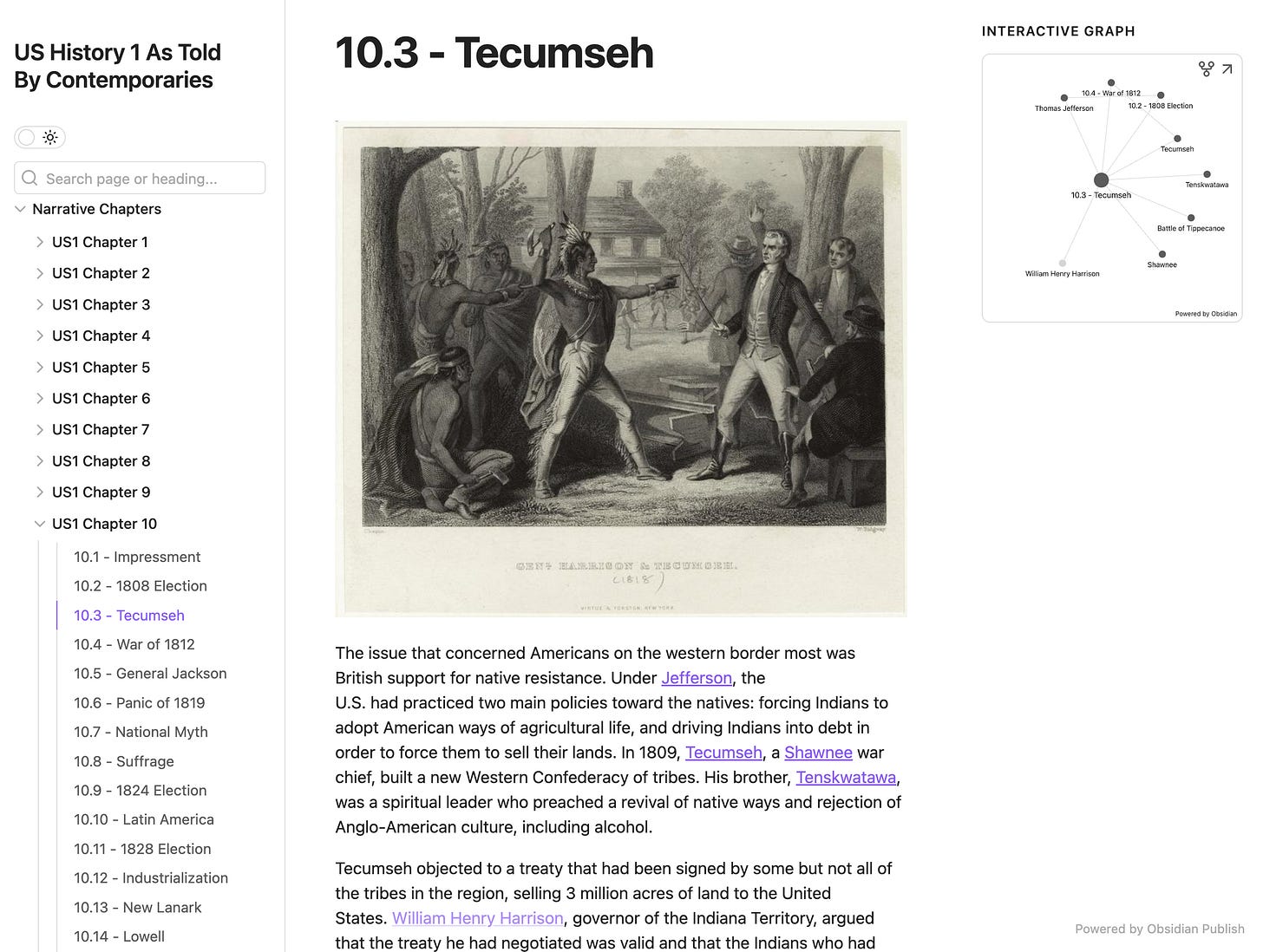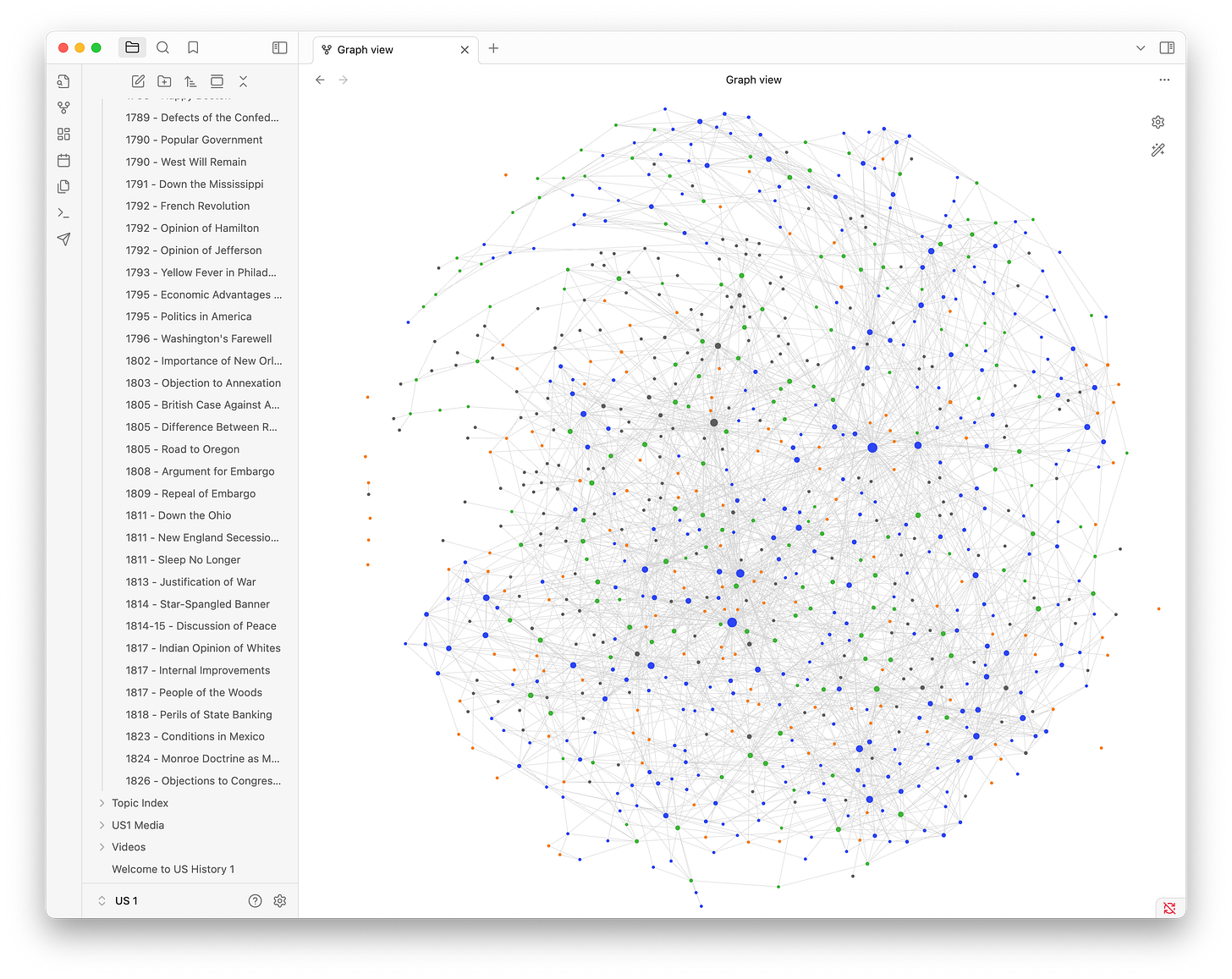It's coming along. There are over a thousand pages now, including narrative from my lectures (in green), additional information on topics of interest (in blue), and about 135 Primary Sources (in orange). The sources have audio files where I read the source, and there are ten lecture videos as well. I'm about 2/3 of the way through the bare-bones implementation of this course in this format. Over time, of course, I'll continue adding. Both to the narrative, to allow it to branch and maybe even go to slightly different "places" in a particular chapter (such as allowing readers to mainly focus on a primarily social or cultural or economic perspective on a period, for example); and also in the supporting topics. As I think I've mentioned, I'd like to add a lot more on the influential families of American history. This would come from my research on the origins of the gilded age. I'd also like to focus a bit on business and finance. And on the history of American medicine. These would be adjacent and might run parallel to the main story of the US History students ought to learn in a survey course. But it would link to it and offer additional context and interesting content readers could pursue.
Another set of content I'm considering rolling into this web of history is the research and writing I've done on my own areas of historical interest. The freethinkers, for example; but also the peddlers and the peppermint kings and Yankees like the Ranney family spreading out from the east coast (Middletown, Connecticut) to the early frontier (Ashfield, Massachusetts) and then the Yankee West (Phelps, New York and White Pigeon, Michigan). It seems a bit odd that historians often avoid making their "survey" writing too particular, but I think if it's adjacent material, this type of content might help readers appreciate the work that goes into focused history-writing on new research; which is ultimately what makes surveys possible.
I've also played around, in the past, with giving students a glimpse under the hood of historiography. For example, in my American Environmental History textbook, I included a review of a foundational monograph in the field, at the end of each chapter. So the chapter in which Europeans "discover" the Americas includes a review of Crosby's The Columbian Exchange and the early American industrialization chapter has a review of Steinberg's Nature, Incorporated. I'm considering adding these types of monograph reviews to the US History Web at some point. Maybe also some readings of big US Histories from the past. By people like Bancroft or Hart or Beard to start, and then more recent authors like Schlessinger, Woodward, Hofstadter, Foner, Cronon, and Richardson. That doesn't replace the need for people to read these books themselves, of course. But it could help them decide which books they'd like to read.
Maybe I'll just turn this into a really big web of linked history. I should call it something unpretentious, like "Dan's History Web".




This is all shaping up to be an amazing resource. Love the genealogy and classic book reviews and topical deep dives into economics and finance and the history of medicine. I think demographics and migration and immigration would be big hits too. I’ve become interested in the public lands debates so I need to read more of your resources on territorial expansion and how American lands ended up in the hands they did. So many stories integral to who we’ve become as a diverse people today! Thank you for so much hard work Dan!!
... The Freethinkers and those who touched on those earlier posts and vids would be really great...
And I wonder when and where the vault/sub-vault boundary on a more non-linear book-like experience needs to drop. The Carbon Almanac, managed by Seth Godin, I think, was the first 'large' public and widely available in Obsidian format and with a dead tree version too. It has continued life, but is still focused. The history areas, can clearly grow to extremes, hence the 'vault/sub-vault' boundary point. I think about this mostly from a search and find point of view - links, etc. Obsidian 'stops' its search within its 'first vault' boundary, but rather like filter and folder limitations, there would seem to be a case for saying that, Columbus's Genoeian background does not need to have a link to the birth rate of those drafting the 25th amendment? So maybe your course breakdown, one per vault, but the whole as linked vaults - allows you to 1. control access and 2. needs a little extra push (super vault search perhaps) to cross vault boundaries in searches...
But by then, there would need to be a nice 100" screen for the graph view. : )))))))
Excellent stuff and certainly nice and quirky... no need to follow too many 'well-trodden paths'.